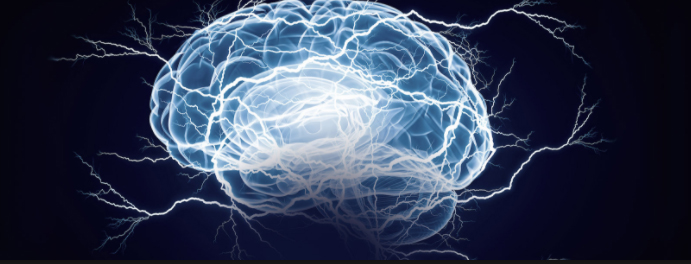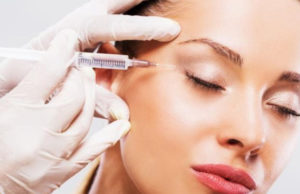
If anyone of us wants to look ten years younger, then Botox is what you would have commonly heard of. Botox can be a saviour to enhance cosmetic appearance. Botox is a solution to many problems these days. Neurological Botox treatment helps cure many major medical issues . Even for neural problem Botox serves as best . So here we will discuss about Neurological Botox Treatment .
What is Botox ?
Botox is kind of neurotoxin which is derived from the Clostridium botulinum. This is a bacterium which produces Botulinum toxin, which is a deadly and lethal toxin. Botox is the best form of Botulinum and is used extensively for its cosmetic and therapeutic value in medical conditions like squint, migraine, bladder problems, and excess sweating. It is injected in small quantities and it acts by preventing signals from the nerve cells reaching muscles, thereby paralyzing them.
Botox Uses is a huge list when it comes to count . Because there are several uses of Botox .
Neurological Botox Treatment
Botox is used in Neurology since its approval by FDA in 1989.
Neurological Botox Treatment is used to treat multiple neurological conditions and has been found to be efficacious. The indications of Botox in neurology are migraine, torticollis or the neck spasm and pain, tension headache, long standing neck and back pain, twitching of the face and eyelids, post stroke upper and lower limb stiffness, excessive sweating known as hyperhydrosis , cerebral palsy and lesions in the spinal cord, temple-mandibular joint dysfunction, and tremors.
Procedure of Botox in Neurology
Botox is available as powder ( Botox Powder ) , which is mixed with saline and injected into skin or muscles in small quantities. The effect is seen within 24-72 hours, sometimes may take up to 5 days and lasts for about 3 months. It is contraindicated in pregnant and lactating women, or in patients with known previous allergy to Botox. Hence it is important to take Neurological Botox Treatment from an expert medical practitioner and also explain your medical history before starting the course of treatment.
Uses of Botox in neurology
Here are the Neurological uses of Botox , earlier we have discussed the various uses of Botox injection .
Botox is a best tool for cosmetic surgeons. But it is also effective in treating some other neurological conditions. Neurological Botox Treatment is used to treat many neurological conditions like the Botox for movement disorders , spasms and paralysis, headache and migraines, tremors, bladder incontinence, and many other hyper secretory disorders.
Botox for movement disorders
Botulinum toxin has proved to be very effective in a wide variety of movement disorders treatment which include muscle over activity such as dystonia and related disorders.
- In dystonia , botulinum works wonders by relieving the patient from aches and pains by significantly improving the posture and allowing normal body functioning. Neurological Botox Treatment can be combined with other treatment modalities to get immediate and favourable results.
Read Also : Nonstimulant Therapy Side effects and specifications
- Patients with blepharospasm should be differentiated from tics that are seen in Tourette’s syndrome. For blepharospasm, the botox injections are given on outpatient basis. Intradermal injections at few points around the eyes are sufficient to treat the condition effectively.
- The most common occupational form of focal dystonia is the writer’s cramp. This is seen in skilled workers who do repetitive and frequent hand movements. It is most common among milkers, musicians, typists, cashiers, ticket collectors, and cobblers. In these patients small doses of botulinum toxin is injected into the muscles. It has found to be very effective in 80-90% of the patients. The result is visible within a week.
Read Also : Astonishing Laser Skin Resurfacing Alternatives For Perfect Skin
- Cervical dystonia is another common neurological problem encountered by majority. This can also involve the shoulder joint. Patients complain of jerky movements, tremors and pain. Here the muscles involved are injected with botox and it reduces the symptoms drastically.

- In patients with oromandibular dystonia as well as laryngeal dystonia bilateral injection approach is the most common. Patients do get relief with botox injections.
- Hemifacial spasm is a serious disabling disease. Botox injection is injected to the muscles which are in spasm.
- In palatal tremors, botox is injected into the palate muscles and this reduces the jerky movements.
- Bruxism is involuntary chewing movements with grinding of teeth. Here the botulinum toxin is injected into the sore part of the muscle along with weakening the most spastic part of the muscle.
- In patients with tics, botulinum toxin can decrease the urge to tic as well as the frequency of tics.
- In migraines and headache, botulinum toxin is known to play a significant role. It acts by blocking the neurotransmitters that carry pain signals from the brain. Botox is a roadblock in the pain pathway in migraine.
Side effects of Neurological Botox Treatment
You may always have a question in mind Botox Safe or Risk – Must Know before Using Botox ?
Botox is effective in treating many neurological disorders. It is generally safe as it is used in very small quantities to treat the neurological conditions. However, certain side effects are common with the minimal dose that is used to treat the neurological conditions.
Most common generalized side effects are the rashes, allergic reactions, itching, nausea, diarrhea , stomach pain, fever, cough, and loss of appetite. At the site of injection, there could be bruises, bleeding, pain, swelling, redness, and even in some cases it could be infected at the site of injection.
The neurological side effects of botox are not very much pronounced. The patient can experience back or neck pain, dizziness, drowsiness, muscle stiffness, difficulty in swallowing, muscle weakness, and headache. Drooping of the eyelids, eye dryness, inflammation of cornea, tearing from eyes, increased sensitivity to light, eyelid bruises or swelling, double vision and reduced blinking are common if botox is injected around the head and neck region.
The neurology botox headache is a common side effect among many patients who have undergone neurological botox treatment. This is a dull headache which occurs after the injection. Most of the times the cause is not identified for the headache post botox injections. It can be treated with a mild analgesic tablet. This type of headache resolves within 24 hours post injection. Sometimes it may last till the effect of botox wears off. This may take few weeks unfortunately.
Read Also : TMJ Headache Must be Treated – Symptoms & treatments
Even the small side effects of botox can be reduced easily . As there are so many ways to reduce risk and side effects of Botox Injection .
Read Also : Botox Injection As Cosmetic procedure Side effects & Benefits
Find a Botox specialist – Neurological Botox Specialist
Botox treatment cannot be considered lightly. Botox is most popular against wrinkles and is done by a cosmetologist. Botox was used to treat neurological conditions even before treating cosmetology issues. Role of botox in neurology is vast and it is found to be effective.
Though Botox sounds to be mere injections, it is not a common task to inject them. What kind of doctor does Botox injections ? It has to be done by a certified and trained doctor
For neurological treatment purposes, Neurologist that does Botox is recommended. After all the medical treatment modalities have failed then the Botox injections are opted. The neurologist is the ideal person to treat the neurological disorders as he knows the various muscles and the pathways involved in causing these disorders. A neurologist has a clear idea about the various nerve pathways involved in the diseases especially with migraine. Treatment with Botox for neurological disorders is the whole and sole responsibility of a neurologist.
Before undergoing the botox injections, the patient can meet the neurologist and discuss the benefits and the risks that are involved in botox injections. Botulinum toxin is to be avoided during pregnancy and in lactating mothers. The effects of the injection lasts for about 3 to 4 months and gradually wear off. Then the injection needs to be repeated.
Botulinum is found to be safe and effective in treating neurological conditions. Apart from making people look young, Botox is known to work miracles in chronic neurological disorders. It has served as an effective therapy in treating muscular spasms and stiffness. After all the treatment modalities have failed Botox works as a miracle in relieving pain and in reducing stiffness, thus regaining the posture and function.

















0 comments